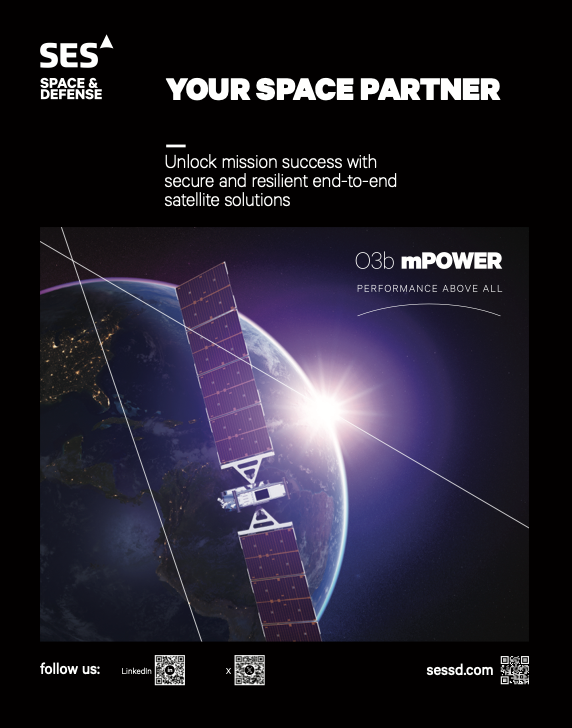Space Foundation, a nonprofit organization founded in 1983 as a gateway to unite the global space community, released The Space Report 2024 Q3, which shows continued growth in the commercial space sector and the U.S. Space Force.

An increase in private sector space employment aligns with a burgeoning commercial space station industry.
In the same quarter, the first- ever private spacewalk occurred with the Polaris Dawn mission, signaling the transition into a new era of space industry and space exploration.
“Having a consistent measure of the global workforce helps us anticipate where the space community is headed,” said Heather Pringle, Ph.D., Space Foundation CEO and retired U.S. Air Force major general, who last served as commander of the Air Force Research Laboratory. “The more we can accurately assess workforce needs, the better Space Foundation and other organizations can build capacity and strengthen the pipeline of available workforce talent far into the future.”
Below is an executive summary of key research and analysis conducted by The Space Report team at Space Foundation.
The global space workforce grew significantly from 2022 to 2023. In the last two years, Europe, Japan and the United States increased their combined space workforces by more than 26,000 overall.
That increase is more than quadruple the hiring in the prior two-year comparison. For the decade, Europe’s space workforce grew 66% and the United States’ by 18%. Over the past five years, France’s space workforce grew 28%, the United Kingdom’s by 56%, and Germany’s by 30
Tracking employment data from four key global regions provides government and the space industry with an indication of the health of space employment.
Space Force recruiting continues to excel
The Space Force again beat the organization’s recruiting goals in FY 2024, and a recent survey shows 35% of American high school students would consider joining the Space Force’s ranks.
That favorable opinion could rocket higher in 2025 as the service makes a new marketing push and leverages having U.S. Space Force Colonel Nick Hague travel to the International Space Station as the first Guardian in orbit.
Specifically, in FY 2024, the U.S. Space Force enlisted 716 Guardians, surpassing the goal of 659 recruits. Guardians, the term for members of the Space Force, are frequently some of the highest scorers on the Armed Services Vocational Aptitude Battery test.
This high number of recruits differentiates the Space Force from other U.S. military branches, which have experienced difficulties recruiting new members in recent years. The Space Report Q3 edition also details the U.S. military’s work in hypersonic missile development and current international threats.
Commercial space stations build toward LEO
Low Earth Orbit (LEO) offers potential for workforce growth. In preparation for the International Space Station’s deorbiting, planned for 2031, multiple private companies are investing in a commercial LEO future.

Four commercial space stations are in development in the United States, injecting more than $800 million into space infrastructure development.
Axiom Space, Blue Origin, and Voyager Space are working with NASA to help fund and design their stations, while Vast Space is privately funded. Much like the transition into the era of private launches, the commercial space station industry promises a faster
timeline, lower costs, and a broader customer base. The first private space station could launch as early as next year.
New missions, better warnings aim to mitigate solar storms
Peak activity from Solar Cycle 25 is expected to occur sometime through the middle of 2025, with increased solar storm risk through 2026. Higher activity can put satellites and Earth systems at risk.
The expected rise in solar activity comes as several initiatives are under way to improve monitoring, increase warning times, and learn more about coronal phenomena.
Europa Clipper mission begins
Europa Clipper from Kennedy Space Center is only the ninth mission launched to study Jupiter and its moons and the 99th confirmed global planetary mission to attempt launch overall.
Why the focus on Jupiter? Europa is the sixth-largest moon in the solar system and one of the best candidates for life within the system because it has evidence of all major components needed: water, organics, energy and stability.
The spacecraft will study the liquid oceans beneath the icy surface of Jupiter’s moon Europa. The mission has three primary goals: to determine the thickness of the icy shell, to better understand the ocean’s composition, and to characterize its geology.
Europa’s ocean is believed to be one of the most likely places in our solar system to harbor life. The probe is scheduled to reach Jupiter in 2030.
U.S. hypersonic programs develop as foreign threats grow
Four U.S. programs supported by defense giants, such as Lockheed Martin, Northrop Grumman, and Raytheon are testing hypersonic missiles. Get the rundown of the programs and progress and the threats posed by Russia, China, North Korea and Iran.
Also in the 2024 Q3 edition of The Space Report:
• Polaris Dawn and why it matters
• Nation in Review: Norway’s space goals
• The FCC announces satellite rate changes
• The National Space Council and its path forward
• Innovation promises to introduce plastic recycling on the ISS
The Space Report, published by Space Foundation since 2006, is the authoritative report on the global space ecosystem, covering space exploration, global space spending, defense programs, commercial space trends, workforce development, launch and payload deployment, space innovation, and other key industry indicators.
The publication is an unparalleled resource for policy analysts, congressional staff, investors, researchers, and space industry professionals and newcomers.
The Space Report is available as a quarterly digital publication and as an online subscription for expanded research, interactive data, analysis, and white papers.


